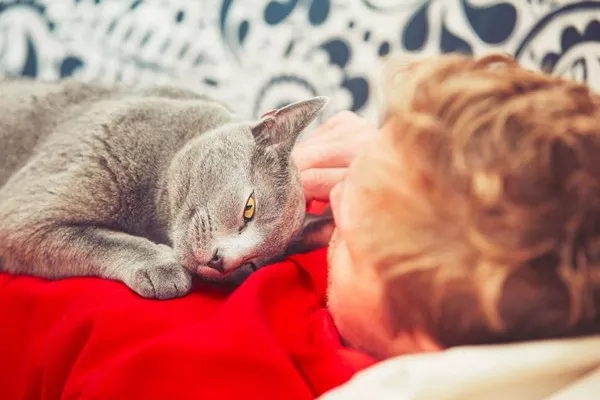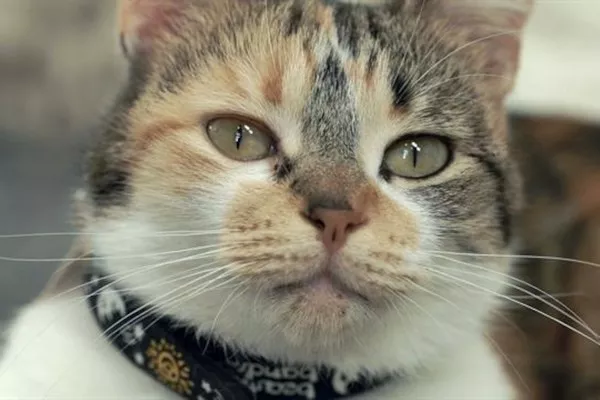Calico cats are renowned for their distinctive tricolor coats, characterized by patches of white, black, and orange fur. These unique felines often captivate our hearts with their vibrant and eye-catching appearance. However, cat owners may find themselves perplexed when they notice changes in their Calico cat‘s coat, particularly when it starts to turn darker. In this article, we will delve into the fascinating world of Calico cats, exploring the reasons behind these color transformations and shedding light on the underlying factors contributing to the darkening of their once-bright hues.
Genetics and the Calico Cat
The genetics of Calico cats play a pivotal role in determining the colors of their coats. These felines possess a combination of orange and black colors, thanks to the presence of two X chromosomes. The gene responsible for the orange color is carried on the X chromosome, and a cat’s coat pattern is dictated by the interaction between these chromosomes. However, as Calico cats age, hormonal and genetic factors can influence the distribution and intensity of their colors, leading to a darker overall appearance.
Hormonal Influences
Calico cats are known for their predominantly female population, with the tri-color gene linked to the X chromosome. Female cats possess two X chromosomes, and as a result, they can exhibit a mix of orange and black colors. Hormonal changes, such as those that occur during pregnancy or as a cat ages, can impact the expression of these colors. In some cases, the hormonal fluctuations may contribute to the darkening of the Calico cat’s coat, altering the balance of pigments and leading to a more subdued appearance.
Age-Related Changes
Just like humans, Calico cats undergo age-related changes that can affect various aspects of their health and appearance. As these cats mature, their coat colors may shift and intensify. The once-bright orange patches may become richer and darker, creating a more pronounced contrast with the black and white areas. This natural aging process is influenced by a combination of genetic and environmental factors, contributing to the overall transformation of the Calico cat’s coat.
Sun Exposure and Coat Changes
Sun exposure can have a significant impact on the coloration of a Calico cat’s coat. Ultraviolet (UV) rays from the sun can cause fading and changes in pigmentation. Prolonged exposure to sunlight may result in the darkening of the cat’s fur, especially in the areas where the pigments are more sensitive to UV radiation. Providing shade and limiting outdoor exposure can help mitigate the effects of sun-induced coat changes in Calico cats.
Dietary Factors
Nutrition plays a crucial role in the overall health and appearance of a cat, including the condition of its coat. Dietary imbalances or deficiencies can manifest in changes to the texture and color of the fur. Calico cats, like any other feline companions, require a well-balanced diet to maintain optimal health. Ensuring that your Calico cat receives the necessary nutrients can positively influence the vibrancy of its coat and prevent premature darkening.
Stress and Environmental Factors
Stress can affect cats both physically and emotionally, and these effects may extend to changes in coat color. Calico cats, with their intricate genetic makeup, may be particularly sensitive to environmental stressors. Changes in their living environment, the introduction of new pets, or disruptions in routine can contribute to stress, potentially influencing the darkening of their coats. Creating a calm and stable environment for your Calico cat is essential in maintaining the health and vibrancy of its distinctive coat.
Underlying Health Issues
In some instances, changes in a Calico cat’s coat color may be indicative of underlying health issues. Certain medical conditions, such as hormonal imbalances, skin infections, or metabolic disorders, can manifest in alterations to the cat’s fur. Regular veterinary check-ups and prompt attention to any unusual changes in your Calico cat’s coat can help identify and address potential health concerns before they escalate.
Grooming Practices and Coat Health
Proper grooming is crucial for maintaining the health and appearance of a Calico cat’s coat. Regular brushing helps remove loose fur, distribute natural oils, and stimulate blood flow to the skin. Neglecting grooming can result in matting, which may affect the way light interacts with the fur and contribute to the perception of a darker coat. Establishing a consistent grooming routine can contribute to the overall well-being and luster of your Calico cat’s tri-colored coat.
Conclusion
In conclusion, the darkening of a Calico cat’s coat is a multifaceted phenomenon influenced by genetics, hormones, age, environmental factors, and health considerations.
Understanding these factors allows cat owners to appreciate the dynamic nature of their feline companions’ coats and take proactive measures to ensure their overall well-being. By providing proper care, attention, and a nurturing environment, you can continue to marvel at the unique beauty of your Calico cat, even as its colors gracefully evolve over time.
Related Topics:
Calico Kittens: Everything You Need to Know
Why Does My Calico Cat Keep Biting Me: 4 Common Reasons
How do Calico cats reproduce?


























